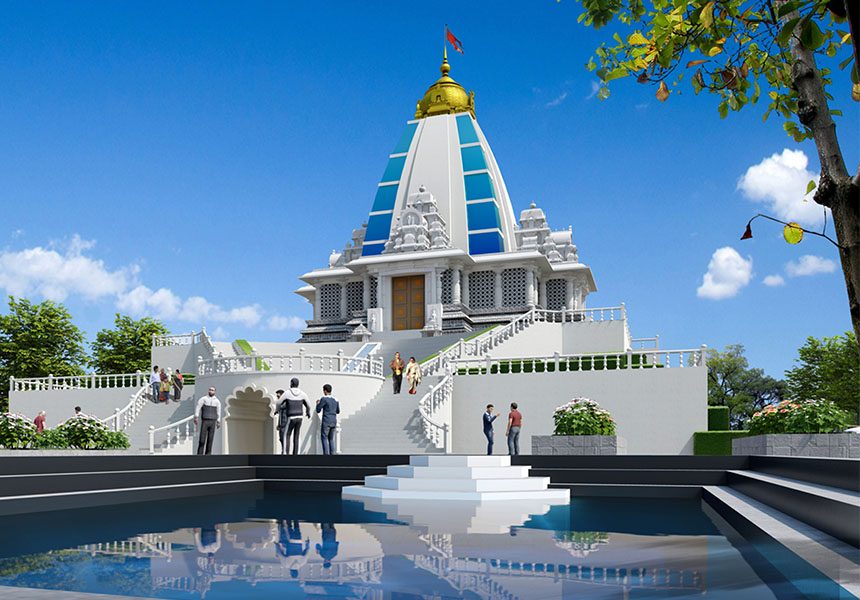ISKCON brings Glass and Gopuram to create a modernised design from temples
ISKCON, Bangalore
ISKCON short for International Society for Krishna Consciousness established with the objective of promoting and propagating the Krishna Consciousness across the globe, as explained by Srila Prabhupada, whose teaching and learning are based on Srimad Bhagavatam and Bhagavad Gita. Currently one of the biggest cultural complexes in the world.
With the foundation stone laid in 1990, it took Six hundred artisans and craftsmen who spent more than 10 million man-hours to complete the construction of this stunning architecture. 1900 tons of steel, 32,000 cubic meters of stone, and 131,250 tons of cement were used in the construction, completing the construction of the temple in 1997.

The architecture strikes a perfect balance between glass and gopurams, representing the fusion of the bald new aesthetics with the majestic traditional design.
With the help of Sri Jagal Chandra Dasa (a devotee, also an architect and product engineer from IIT Mumbai) Sri Madhu Pandit Dasa, a qualified civil engineer from IIT and the president of ISKCON Bangalore Society used his knowledge to conceive this magnificent for Lord Krishna.
Inaugurated by the then President of India, Dr. Shankar Dayal Sharma on May 31, 1997, the heavily decorated Rajagopuram serves as the primary entrance leading the way to the main sanctum. Surrounded by four colossal gopurams each of which is connected to each other through a striking glazed glass canopy.
ISKCON Bangalore is a modern marvel in architecture and engineering. It is one of the biggest cultural complexes in India, it is spread across 7 acres of land, originally a hillock now converted into a beautiful garden, water fountain, and a modern temple. Originally intended for a simple temple design costing Rs. 10 crores laid the foundation for a modern majestic design, celebrating a unique architectural model that cost Rs. 32 crores. The cultural complex also houses the Akshaya Patra mechanized kitchen, a multi-vision theatre, an open air-auditorium, an art and craft outlet, an organic outlet, a Vedic library, and a guest house for its visitors, members, and residential accommodation for devotees. The campus also has adequate car parking to accommodate cars even during its peak, clean drinking water, hygienic washroom facilities, and elevators.

Following the theme of modern aesthetic and design, ISKCON has also brought on board Smart Creation for their extensive research on the temple and use of modern nanotechnology for gold plating their main internal Vimanam(complete in two phases), the Grand Arch, Sri Lakshmi Narsimhar Swamy vimanam, and various Kavachams. The 56 feet high gold plated Dwajastambha is one of the tallest in the world, its beauty is visible from miles away.
NASA and ISRO use the same nanotechnology of gold deposition in their Rockets and defense system respectively. At present Smart Creations has done Gold Plating work on over 5000 temples across India, worked on over 10,000 Kalasams, more than 100,000 idols, and restored 100,000 idols. Using the NTGD – Nanotechnology for Gold deposition to gold plate the base metal to evenly cover the surface with gold. Depositing pure gold increases the receptivity of vibrations with the least resistance.
